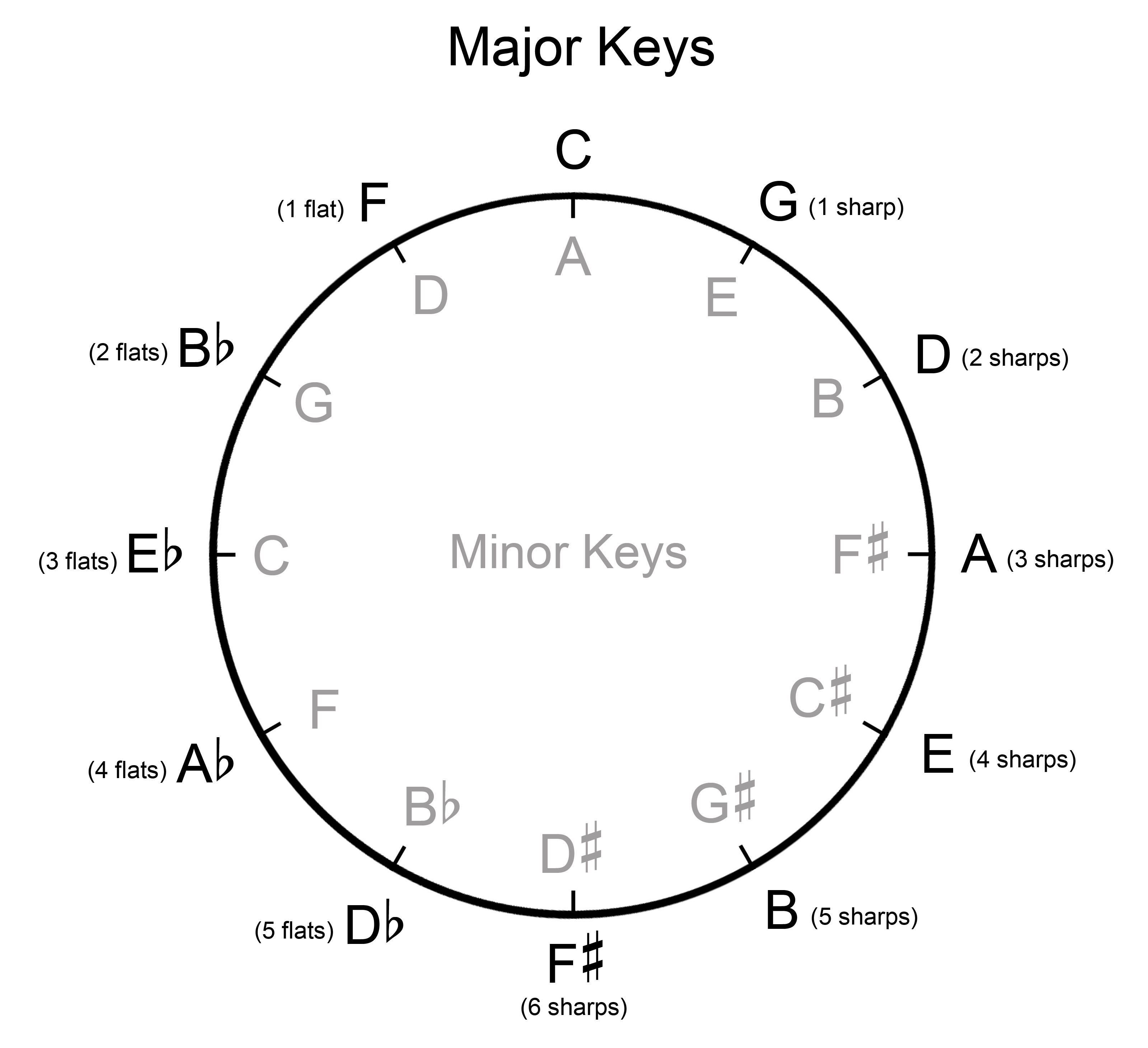
In this lesson, we’ll discusss the Circle of Fifths. As you read clockwise you will find the sharps
of a given key, revealing the “clock face” similarities, up to the six o’clock position. Noting that C occupies the 12 noon position, you can associate
1 o’clock with one sharp, the key of G Major; 2 o’clock with two sharps, the key of D Major; and so
forth up to 6 o’clock, the key of F#. Take a look...

The Cycle of Fourths operates in much the same way. The key of C occupies the 12 noon position, just like before; but now traveling counter-clockwise, we come to the key of F, and encounter one flat (Bb). Travel a fourth again and we come to Bb, which has 2 flats (Bb and Eb). As you see, it continues up to Db.
Note also that inside the Circle are the minor keys, beginning with A in the 12 noon position, which has no sharps at all. You travel clockwise to find the sharps in minor keys, just as with the outside circle of Major keys. So the next key, E, will have one sharp (F#), then B will have two sharps (C# and F#), and so forth.
While I have separated - by definition - the Circle from the Cycle, you can see the above chart is actually an all-inclusive representation of both, and which includes both the Major and the minor keys. So, using the above diagram, you can travel counterclockwise (the Cycle of Fourths) to find the flats in a given key.
To differentiate between the two methods, we use Circle to demontrate movement in 5ths, to find the keys with sharps; and Cycle to demonstrate movement in 4ths,
to find the keys with flats. It keeps the two separate in their declarations to avoid confusion. It may seem a little redundant to repeat this information, but I want to be sure you clearly understand
the application of the Circle of Fifths (the "official" name of the whole thing), how you use it.
It is most important to realise that the Circle of Fifths is a diagram portraying natural acoustic relationships between adjacent tones on the Circle.
Going counter-clockwise: each note represents Overtone No.3 followed by its Fundamental.
Going clockwise: each note represents a Fundamental followed by its Overtone No.3
The Circle of Fifths underlies many principles and elements of Western Music. Most of all, the Circle of Fifths is a powerful engine for harmonic motion (the movement from one chord to the next) which has been used in Western music for the past 300 and more years.
The dominant 7th chord provides the strongest pull along the Circle. But other chord qualities, too, move naturally along the Circle in a pleasing and logical progression.
The harmonic force moves counter-clockwise. But short chord progressions moving one or two steps clockwise against the flow are also common.
While some of this may seem confusing, over time and with increased understanding of theoretical ideas, it will start to make more and more sense. In this lesson has been given an introduction to the Circle and Cycle, and it is in no way intended to be construed as a complete primer on this subject. More will be covered in other columns on this site.
For now, simply glean what you can and you'll soon begin to "get it".
Okay, now shut off your computer and go play with some ideas.
See you next time.